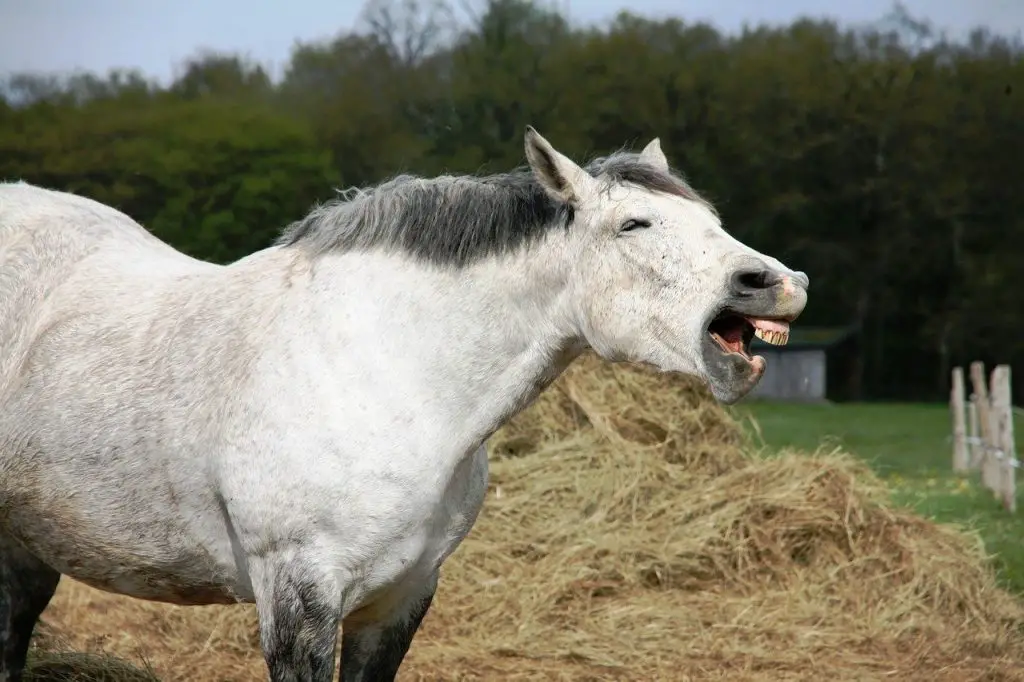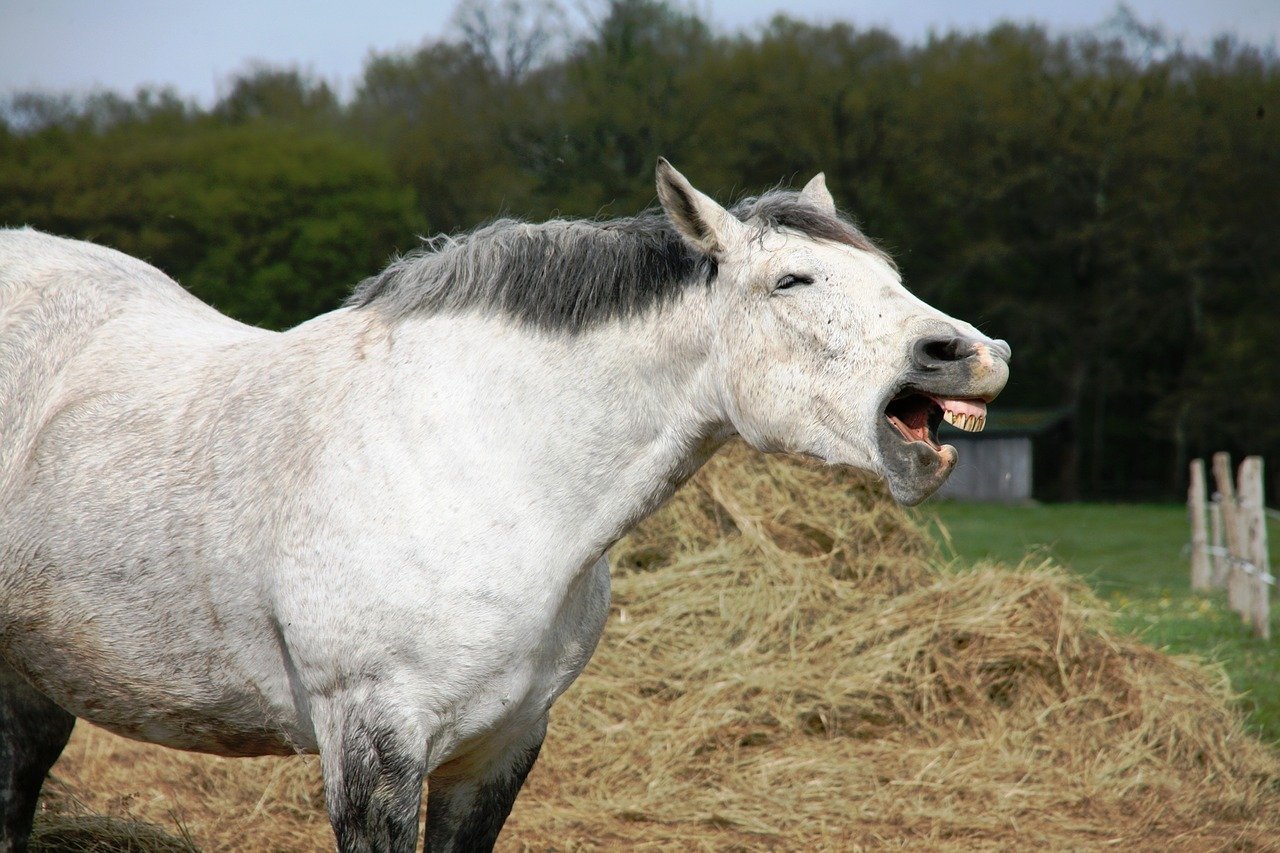Last Updated on February 19, 2022 by Allison Price
Horses are very vocal. This is how you can interpret his vocal sounds.
Horses don’t have a singular sound that conveys a particular idea. However, they do use vocal sounds to communicate general ideas and emotions. I will start with the most common sounds that you might hear from horses and then move on to the more complex sounds, explaining the clues that help you (or your buddies) understand what he is “telling you”.
Sighing
Horses tend to sigh and take deep, slow, deep breaths. They then exhale slowly through their mouths or nostrils. This is more common around humans than it is when they are interacting with one another. A sigh of relief is heard (like your “Aaaaah!”). When you take off a pair of tight boots. This is a sign that your horse is feeling better. You can listen out for a relaxation sigh when your horse is feeling tired. This is the sound where he places his head forward and then exhales through his nostrils. Horses can also sigh out of boredom when they are doing too much ring work. This is the horse equivalent to the “ho-hum”, which you might hear if you’re waiting in line at the grocery. It’s a sign to try something new, learn new patterns for riding on the flat, and go for a trail ride.

Groaning
Horses can groan as in humans. However, it can also be a sign of pain. This is why you need to do some research, especially if you are new to the horse and don’t know what noises or situations are typical for him.
He may be like the tennis player who gives an “oof!” when he grunts or groans over fences, but otherwise seems happy. With every serve. If he grunts when he hits his fences, pins his ears, or rolls his eyes it could be a sign that something is wrong. His back could be the problem. If he refuses to saddle or girth, then tuck his tail and hindquarters when you mount. Then, as you sit down in the saddle, hollow out his back. You can check his legs and feet for heat. Also, watch out for signs of laminitis such as a resting stance or weight loss.
A rider who groans with only certain riders may be hurt if he thumps heavily into the saddle after a jump, or at a sitting trot. He may be groaning when he manures, but he seems happy and normal. This could be due to involuntary air movement through his vocal chords while he uses his diaphragm for defecation or normal abdominal discomfort/relief. If he suddenly starts to groan when he’s manuring, especially if the manure seems dry and firm, you should suspect that he has impaction. You should monitor his water intake and listen to both his left and right flanks for normal gut sounds. Also, take his pulse rate. Do a pinch test to check his hydration. A pinched-and-released fold in the neck skin should return its original contour in under two seconds. Also, check his gums. Call your veterinarian if they are dark pink or tacky.
If your horse is groaning while not in saddle, it could be an indication of gastric ulcers. Recent research suggests that at least 60% of performance horses suffer from ulcers. Your veterinarian may recommend an endoscopic exam if your horse is groaning or showing other symptoms.
Also see Understanding Ulcers
Sometimes horses groan when they realize that work is done. In the absence of any of the above symptoms, they are probably anticipating taking off the saddle, rolling, manuring and eating some hay.
Also see 6 Steps To Protect Your Gut Health
Nickering
For this soft sound, your horse will use his vocal chords but keep his lips shut. It is usually a friendly greeting and a welcome “Hi!” Good, you’re here! “Come talk to me!” With an alert expression and raised head, he will point his ears in your direction. (The same affectionate summons is used for the lovely nicker of a mare towards her foal.
The nickering might be more joyful if you are a regular visitor at certain times. Your horse’s nicker will be faster and more pronounced if others are fed first. Horses can also nicker more subduedly, from fear, like “Uh-oh! This looks terrible; what should we do?” If they feel threatened or trapped, horses may nicker. If they feel threatened or cornered, this is a sign to get rid of your horse.
Blowing or Snorting
Your horse is excited when he inhales rapidly and then exhales through his nostrils, making them vibrate with a loud purring sound. He might be imagining you pulling his lead rope at turnout. Horses can get even more stressed out by the sound of this sound. If your horse continues to blow, with his head up and tail raised, you should be ready for unexpected movements as you lead him out. You can remind him that you are still in control by calming him down and leading him around before you open the gate. If he isn’t careful, he may try to run away from you. If he comes to a place where you canter normally, or if there is a cold breeze under his tail, he might start blowing. He is saying “I want to go!” He’ll also be causing excitement in his friends, so you can have all the fun with your riding buddies.
Nearby
If your horse neighs, it is already stimulated. Even if he is normally sleepy, you will need to pay more attention to how you handle him and how you ride him. Depending on the tone and body language, this sound can indicate anxiety or confidence. A tremulous, high-pitched neigh is a sign that a horse is anxious. It may be pacing the fence to let someone else out, or calling for a stablemate who has gone to a show. The nervous neigher might break out in sweat and vomit. His ears flicker, his eyes rove and his tail lifts then lowers. To make himself appear smaller, he may tuck his tail and curl up.
Confident neighs have a louder ring. This is reinforced by forward-pricked ears and bold looks. At mealtime it’s more demanding communication: “Get your body out there and feed me NOW!” It is more than a nicker. If one horse neighs with a group of horses, it could be a warning sign that a strange horse or unusual object is near.
Horses are definitely more verbal than we, but horses can be better listeners and connect specific meanings with sounds. Horses in a group learn complex voice commands that are associated with their names, which is something carriage drivers already know. Instructors may find it difficult to keep up with school horses who can recognize and execute the next move, even if the instruction is in English.



